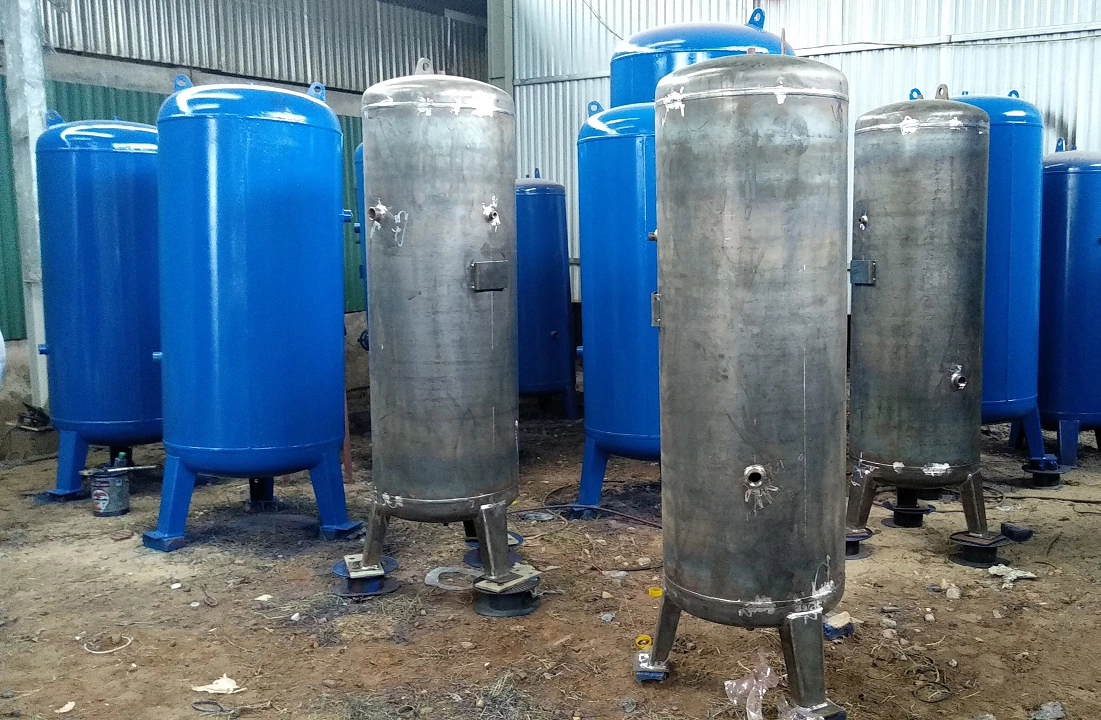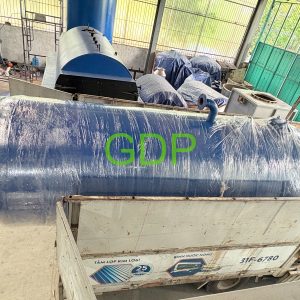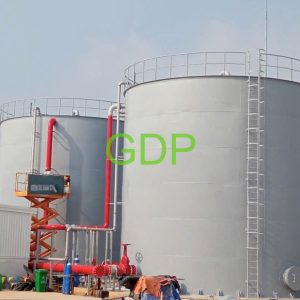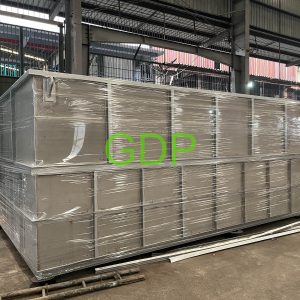Pressure filtration tanks are an effective solution for the purification process, increasingly becoming indispensable equipment in factories and enterprises from food to chemicals.
What is a pressure filter tank?
A pressure filter tank is a type of closed filter tank, designed quickly and effectively, suitable for purifying well water, wastewater, and many other types of liquids. The main structure of the pressure filter tank is usually made from stainless steel or composite, with a vertical cylindrical shape (small capacity) or horizontal cylindrical shape (large capacity), ensuring high durability and ability to withstand high pressure. during operation.

Structure and function of pressure tank
Functions of pressure vessels
- Regulates energy through fluid flow and pressure.
- Is a guaranteed source and supply for the operation of hydraulic systems and water pump systems.
- Maintains stable hydraulic system pressure, helps protect and increase the life of the pump, avoiding incidents and possible technical problems. At the same time, limit the occurrence of hydraulic shock when disconnecting the load source.
- Create a load balance between the system’s load and the force that generates and stores hydraulic energy.
- Minimizes vibration and foam generation of the pump, helping to limit hydraulic shock and increase the life of the pump.
- When the pump operates low, worse than the standard, the pressure tank will automatically compensate for leaks and the flow of liquid passing through.
Structure of pressure tank
- Tank shell: made of steel or stainless steel SS304-SS316. Able to withstand very high force and pressure.
- Vase core: includes 2 basic parts as follows:
- The rubber cover contains hydraulic oil when operating in connection with the hydraulic oil inlet and outlet.
- The surrounding part contains nitrogen gas at a fixed pressure.

Installed parts must comply with the technical requirements of the pressure tank structure, to ensure they do not cause danger to users.
Operating principle of pressure tank
The basic operating principle of a pressure tank is two processes: charging and discharging:
- First process: when the pressure relief pipe is applied, it will cause the pump contact to operate from the pump nozzle to follow, helping to open the one-way valve pipe. From there, the water will be pushed out the pipe.
- The second process, after pumping, the pressure in the pipeline is increased, causing the pump contact to stop operating, stopping the water supply under the influence of the relay. Therefore, the one-way valve at the discharge end of the pump will be closed again.
- When the pressure and water level are reduced to a certain level, the water in the tank will be pushed out, ending the operation of the pressure tank.
Functions of pressure vessels
Regulates energy through fluid flow and pressure
- Is a guaranteed source and supply for the operation of hydraulic systems and water pump systems.
- Maintains stable hydraulic system pressure, helps protect and increase the life of the pump, avoiding incidents and possible technical problems. At the same time, limit the occurrence of hydraulic shock when disconnecting the load source.
- Create a load balance between the system’s load and the force that generates and stores hydraulic energy.
- Minimizes vibration and foam generation of the pump, helping to limit hydraulic shock and increase the life of the pump.
- When the pump operates low, worse than the standard, the pressure tank will automatically compensate for leaks and the flow of liquid passing through.













Đặt câu hỏi